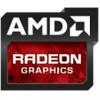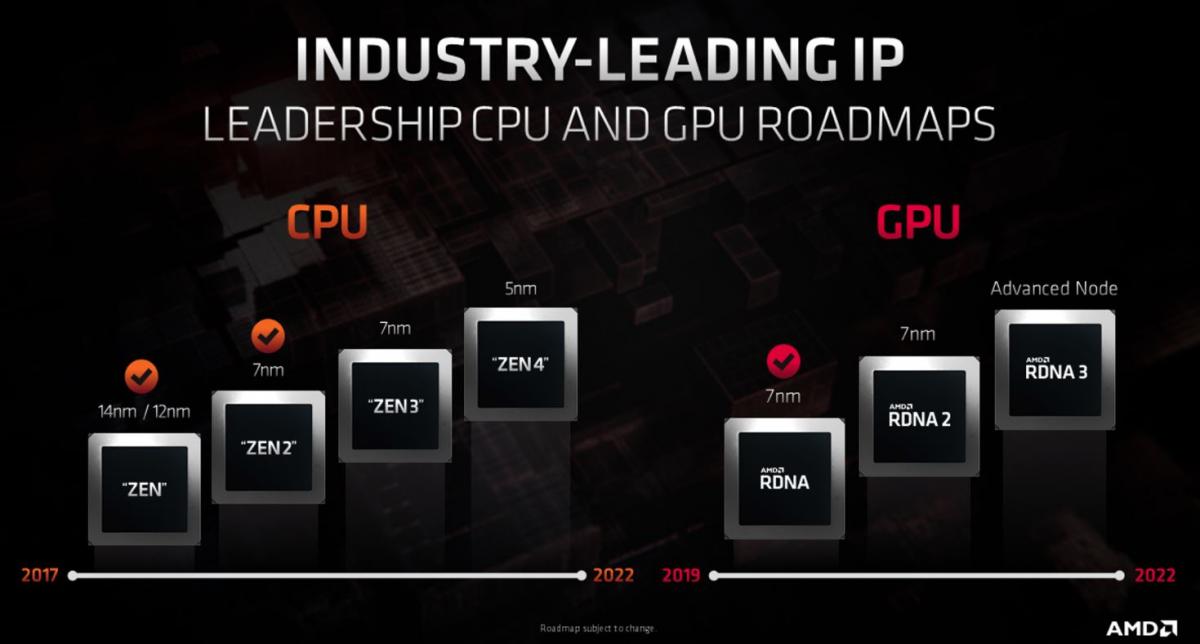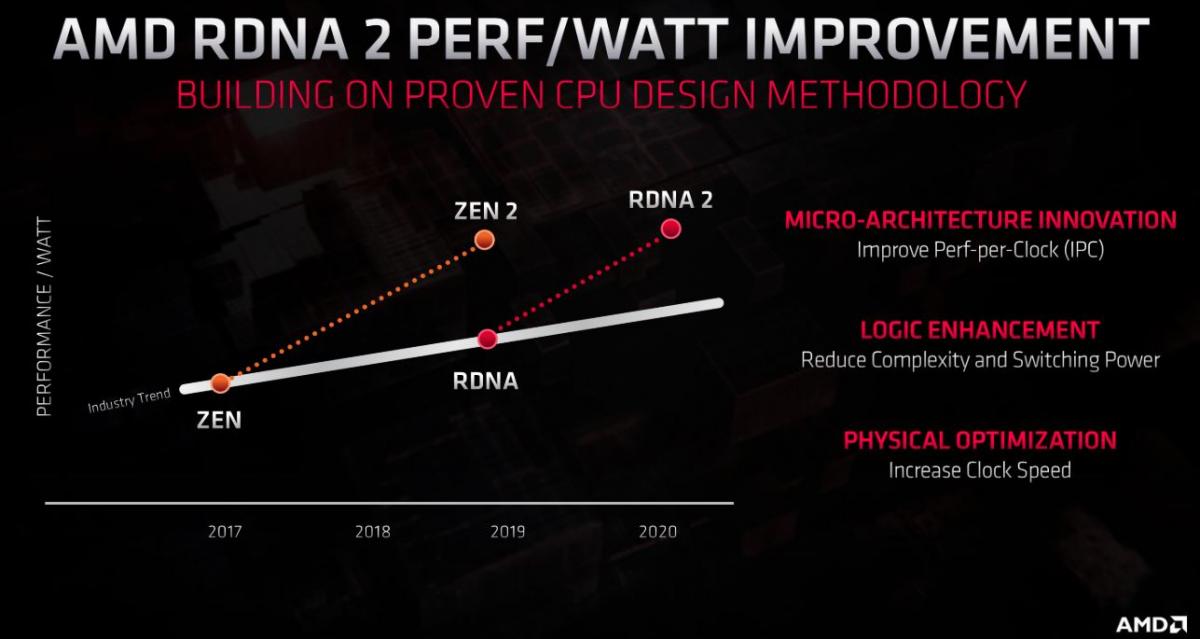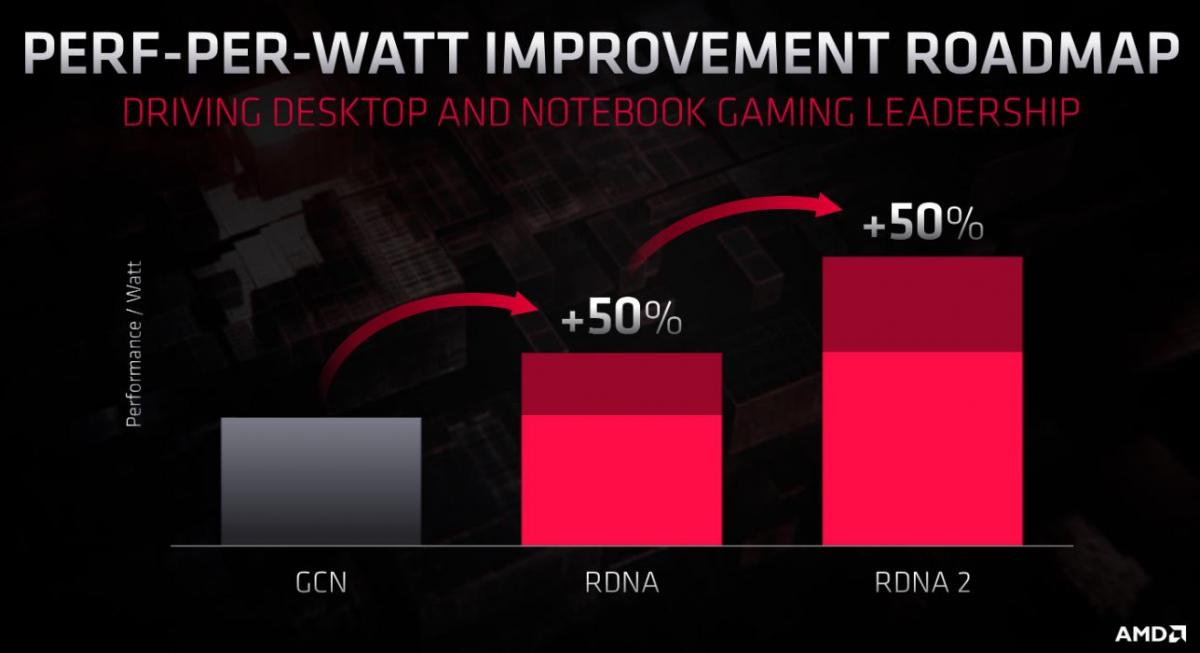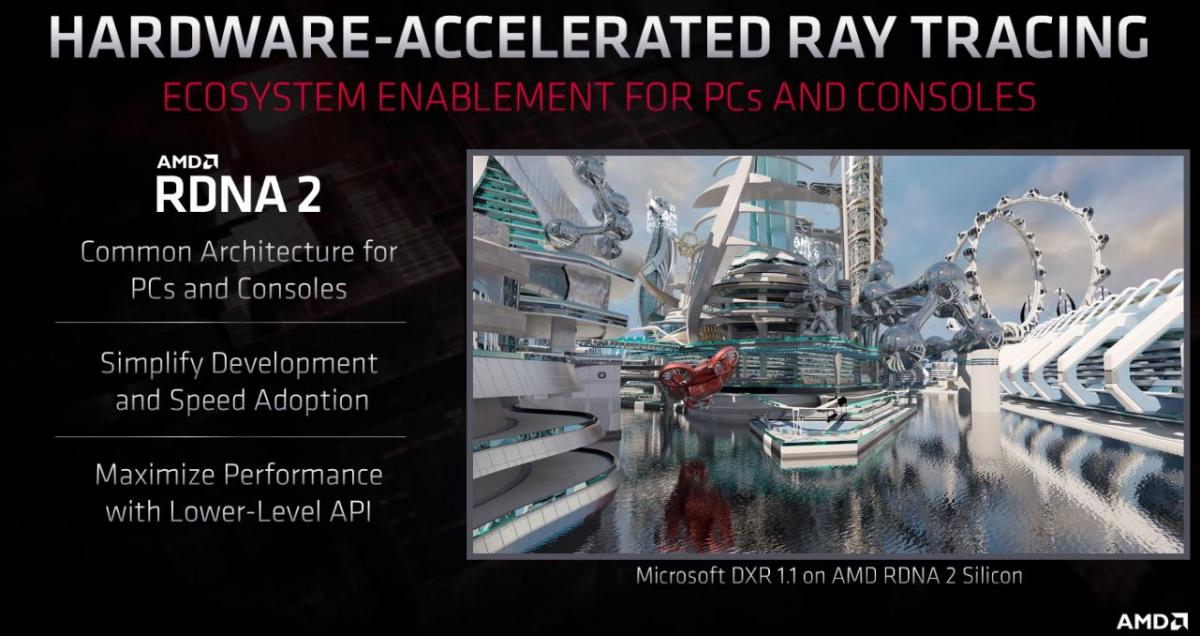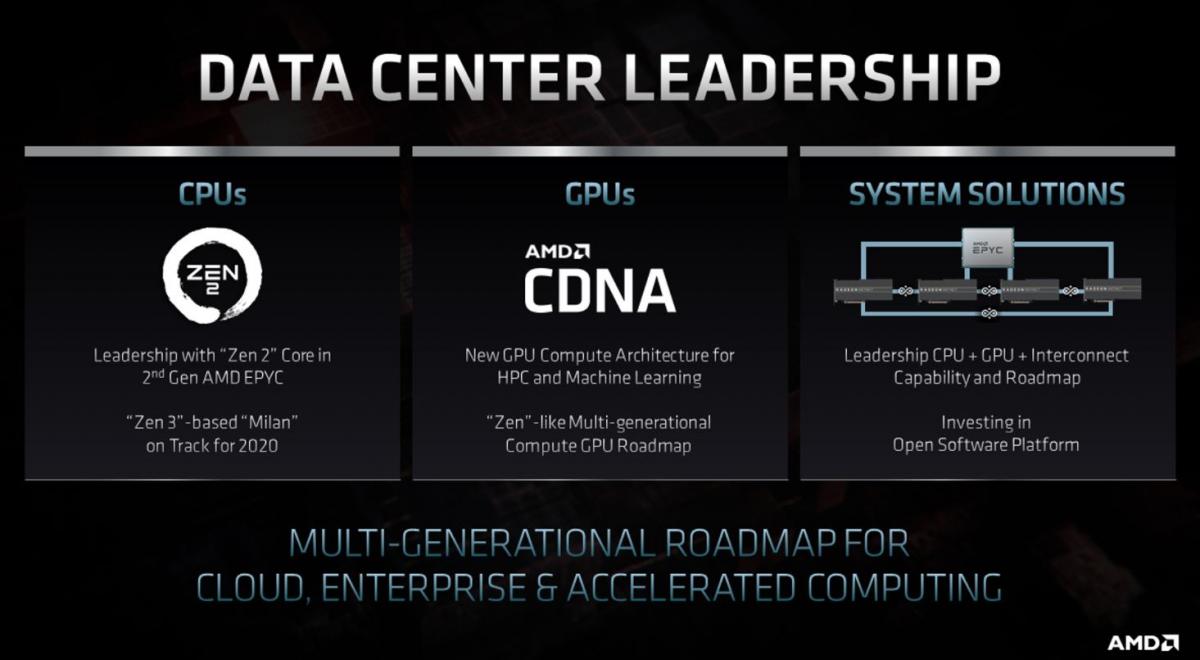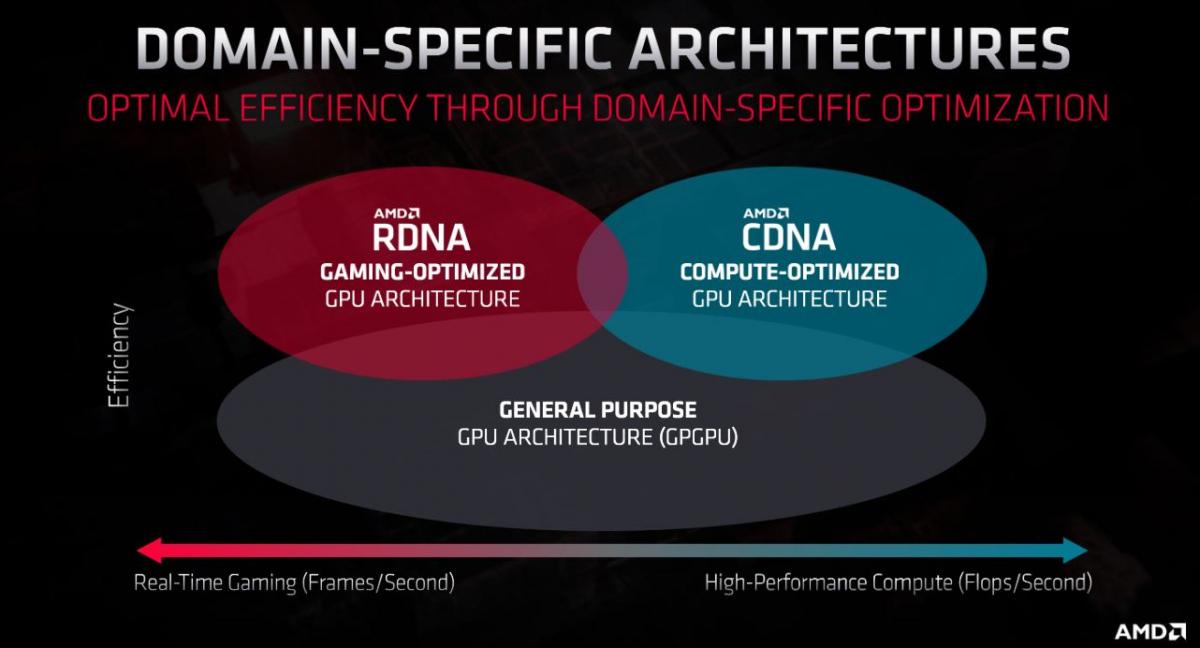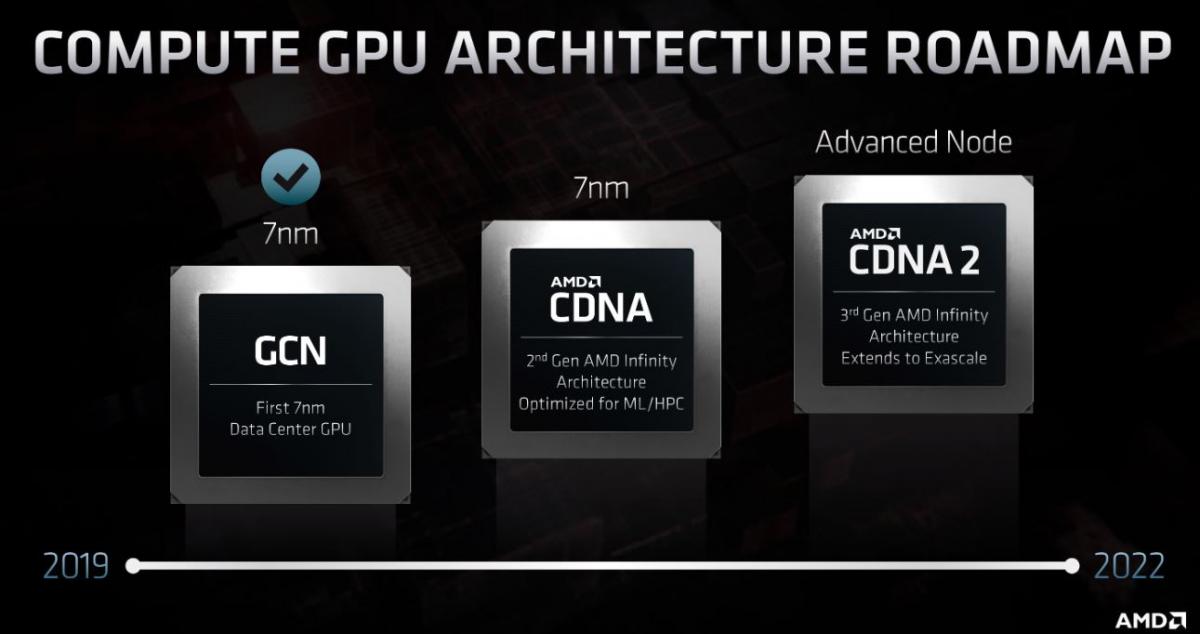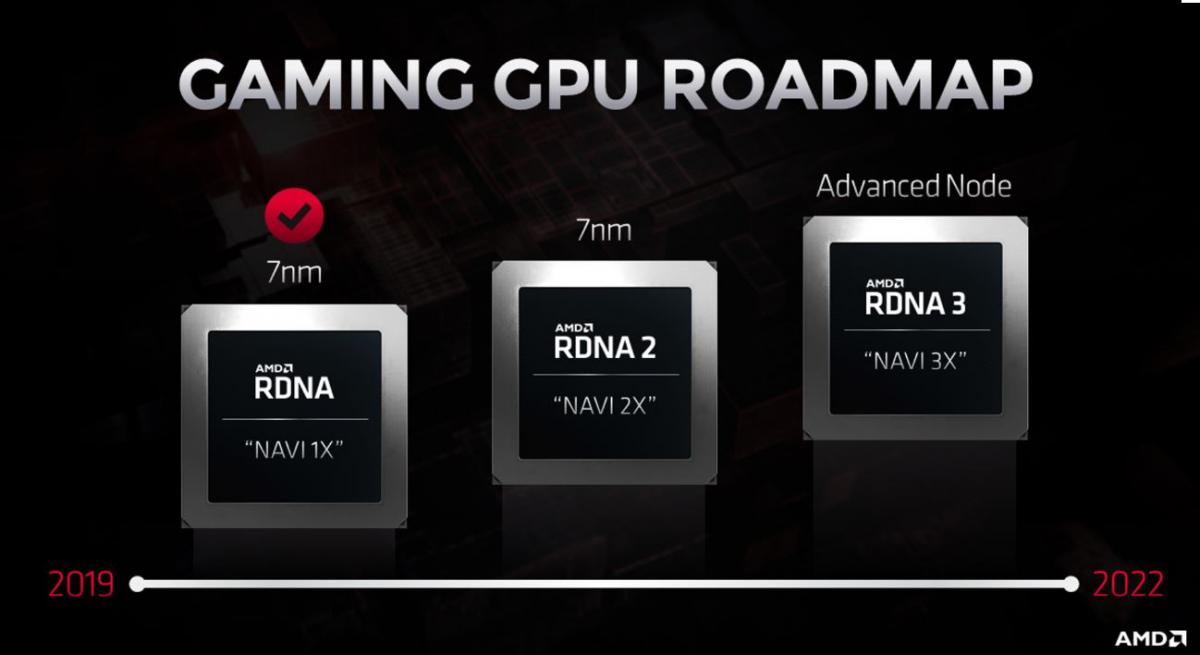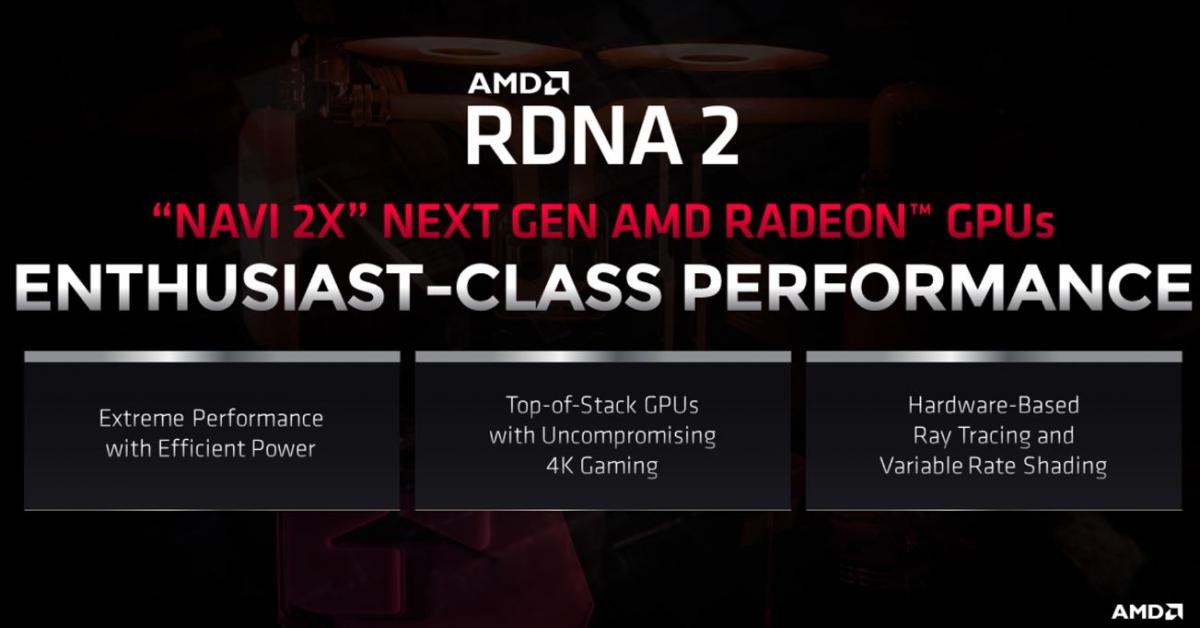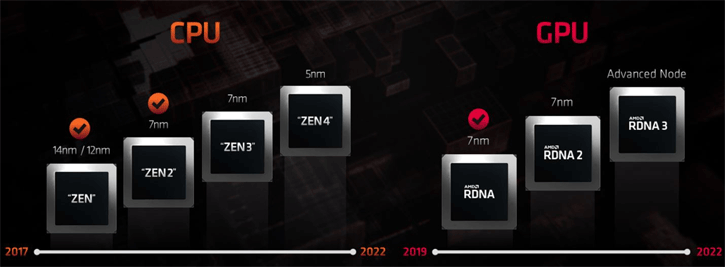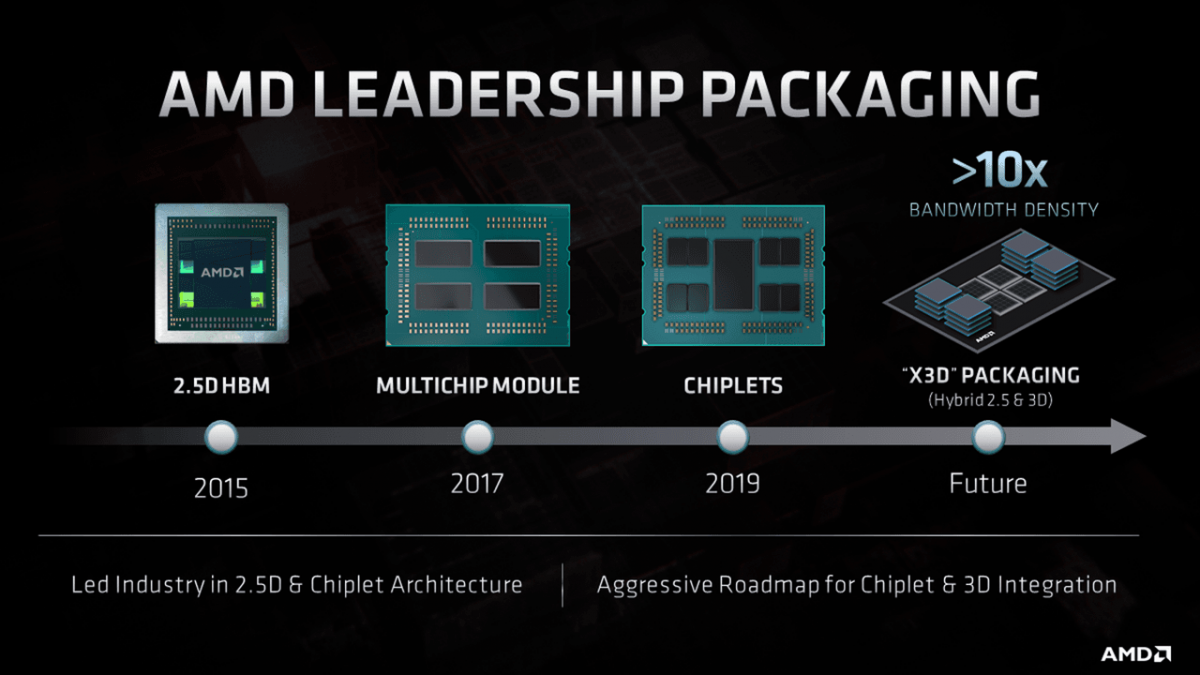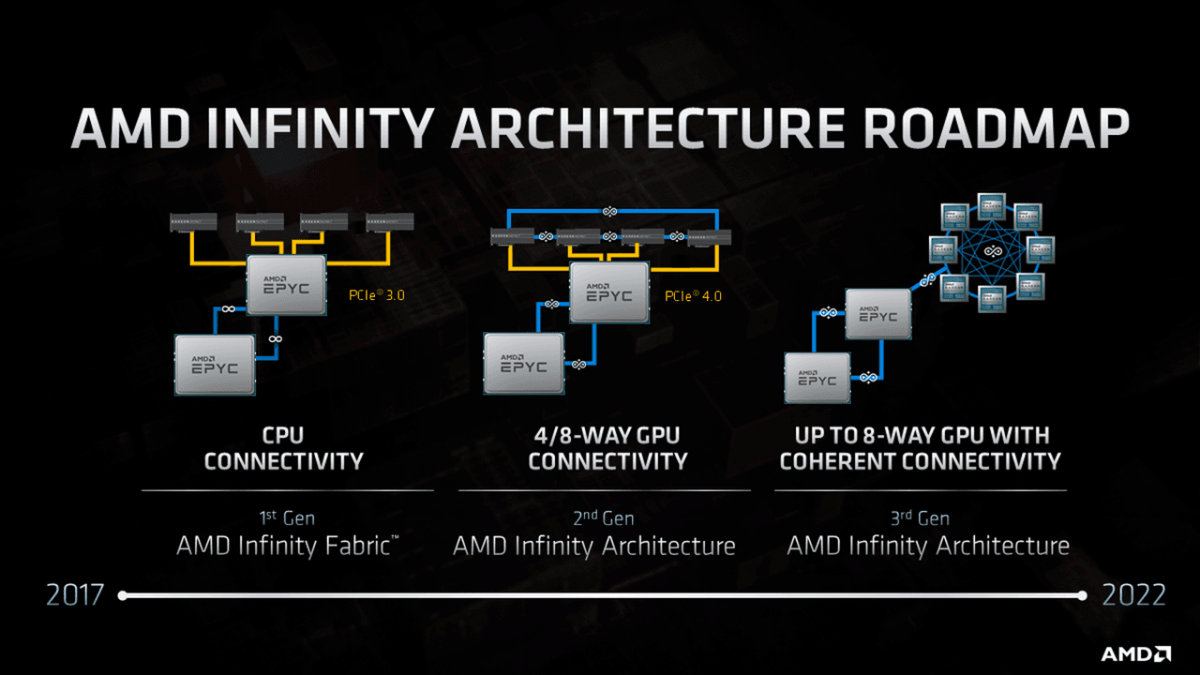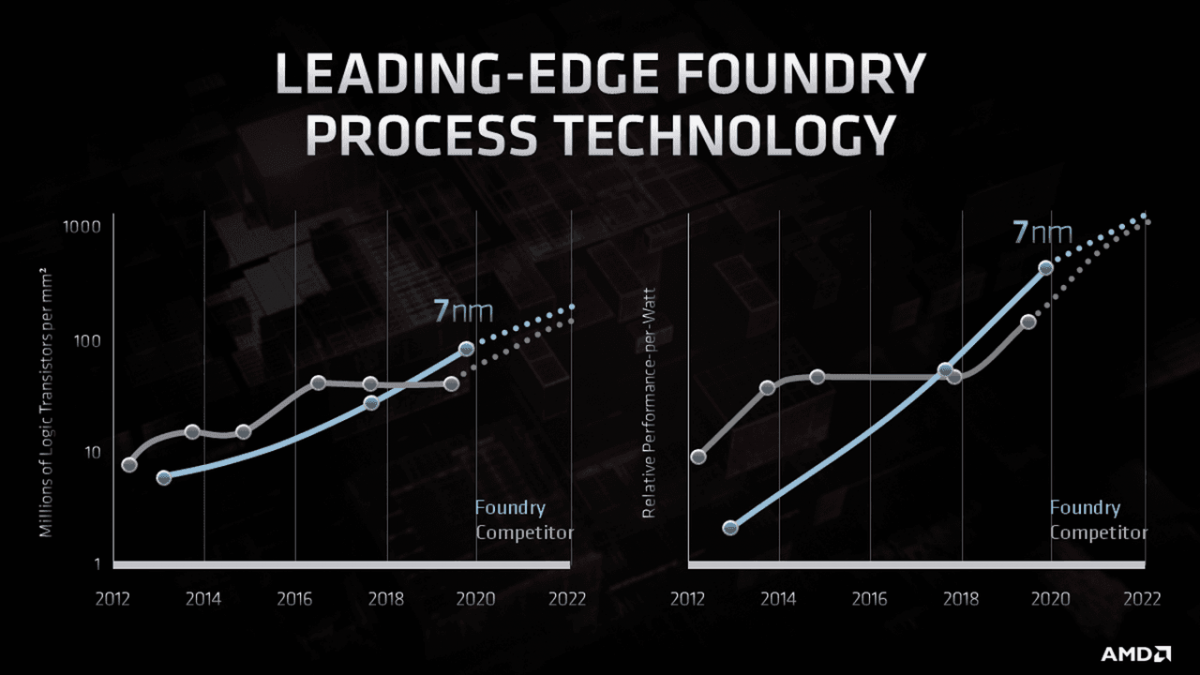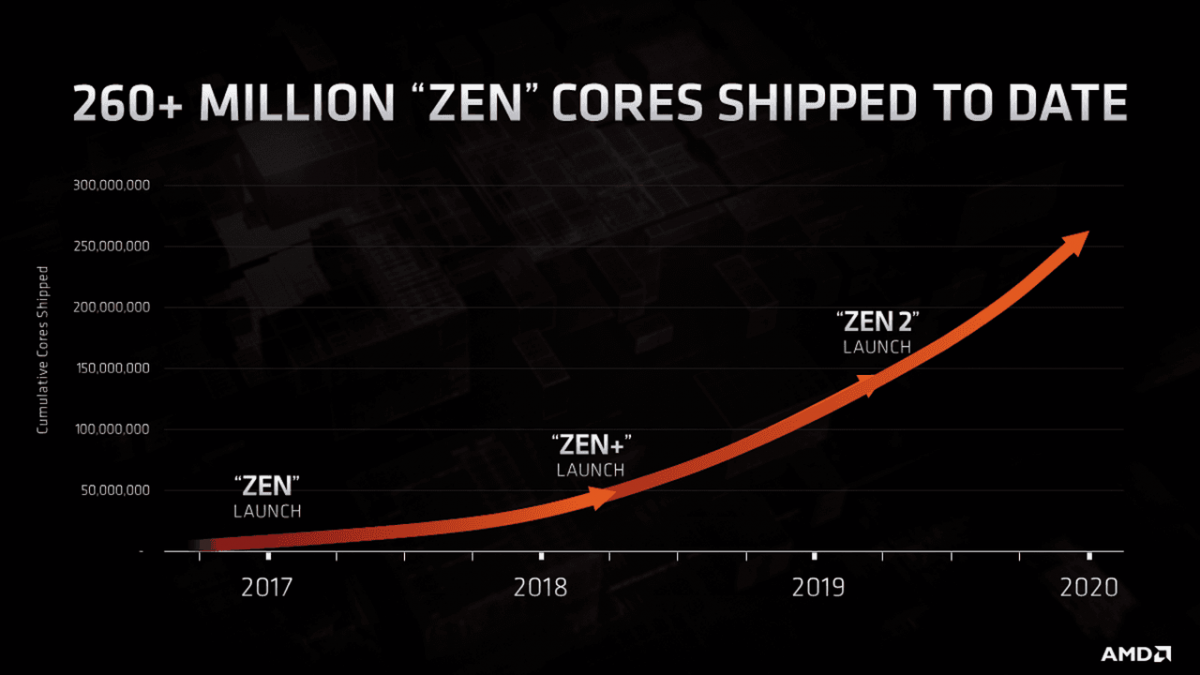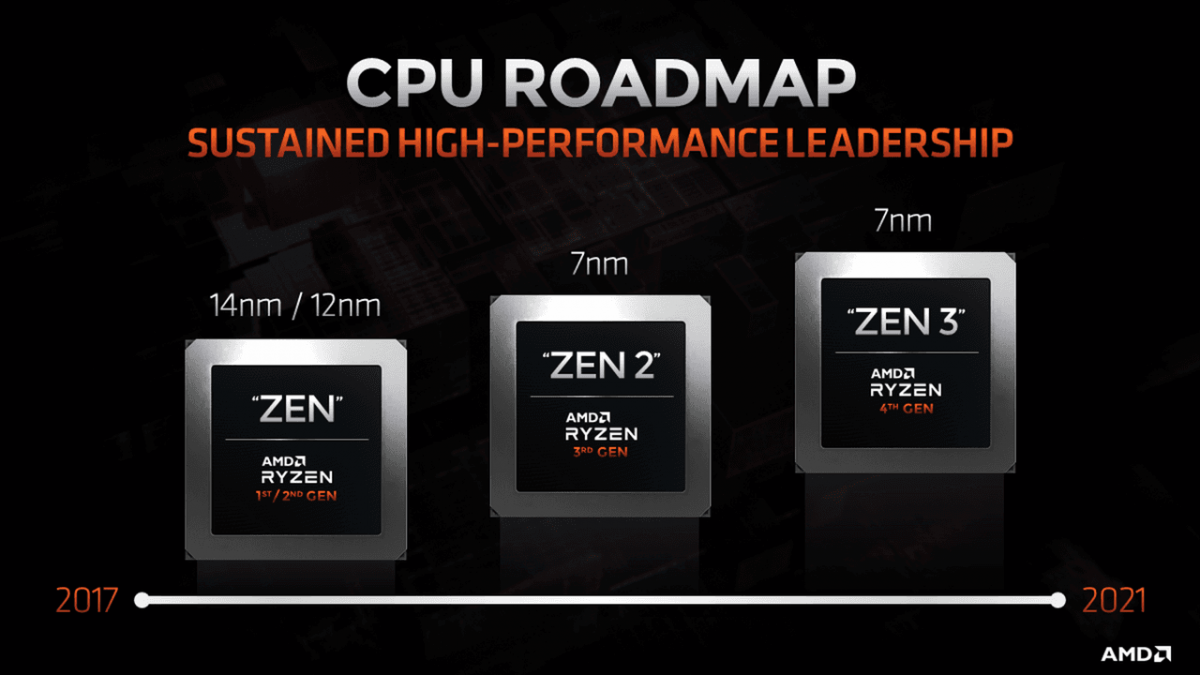At financial analyst day AMD CEO Lisa Su today talked about architectural roadmaps up to 2022 and shared a word or two about ZEN3, ZEN3, RDNA2 as well as what seems to be a teaser of Big NAVI.
AMD CEO Lisa Su took to the stage provided some updates to the company's plans for the next three to five years. The financial analyst day presentation sounds like it is, long (!) as they'll talk through the entire product line and then some. However this round AMD shared a few more roadmaps. AMD shared a new roadmap for CPUs and GPUs. The company will release Zen 4 processors based on the 5nm process in-market by the end of 2022. Meanwhile, Zen 3 on 7nm is on track for late 2020.
Radeon graphics
We knew already that RDNA2 (listed as NAVI 2X) with Big NAVI is going to support hardware-accelerated raytracing (DX-R), this is now (again) confirmed. In a roadmap, AMD now also list RDNA3 (and next year we're sure a similar slide will show RNDA4). AMD will release video cards based on RDNA2 at the end of this year, these are aimed at 4k gaming and have hardware support for raytracing. AMD put the RDNA 3 generation on the roadmap for 2022. While new details have not been disclosed AMD did confirm that the RDNA 2 video cards will support variable-rate shading and thus hardware Raytracing. VRS is a technique where fast-moving parts of a scene that you do not focus on with your eyes, will be rendered at a lower quality.
AMD designates the Radeon cards based on RDNA 2 as NAVI 2X, RDNA 3 is referred to as Navi 3X on the new roadmap. Proper details about the new video cards are still missing, but AMD has announced that the first RDNA 2 cards will be released at the end of this year, which really sounds like delay? Thes cards are intended to be high-end cards for 4k gaming. Compared to the current RX 5000 cards based on the RDNA 1 architecture, AMD promises a 50 percent improvement when it comes to performance per watt. That would be possible due to higher clock speeds and architectural changes.
So yeah hidden embedded in the slide deck ... a teaser of Big NAVI?
Very interesting to see is that RDNA2 architecture should bring a 50% power efficiency improvement. RDNA3 (NAVI 3X) is listed as an advanced node, meaning it could be a 7nm product series that is further optimized, however, we would not be surprised to see it on a 5nm node, similar to ZEN4. AMD also mentions two architectures will be used for GPUs. a computer-oriented GPUs will utilize CDNA architecture, while gaming targeted GPUs will remain at RDNA. This is something that NVIDIA is doing as ell for example with Volta, that way they can more deeply optimize the GPU for its intended workload. CDNA architecture is thus a GPU architecture for data centers. The C stands for Compute. AMD would release the first CNDA cards later this year and show a roadmap with the CDNA 2 architecture, should arrive in 2022.
Desktop processors
On the processor side, the roadmap slide shows ZEN3 at7nm (optimized) and ZEN4, which will be based on a 5nm fabrication node. The company is working closely with TSMC for the production of Zen 4 processors at 5nm. AMD has not yet detailed anything about the new Zen 4 architecture. The company did mention it will use techniques for stacking chips for various future products. AMD will combine that with the chiplet technology that is already being used. The stacking of chip orders is called AMD X3D packaging which could be introduced with ZEN4. The first processors with Zen 3 cores will be released at the end of this year. They are fabbed on an improved version of TSMC's 7nm process. AMD also mentioned it now has sold more than 260 million processors based on Zen cores, introduced in 2017.
